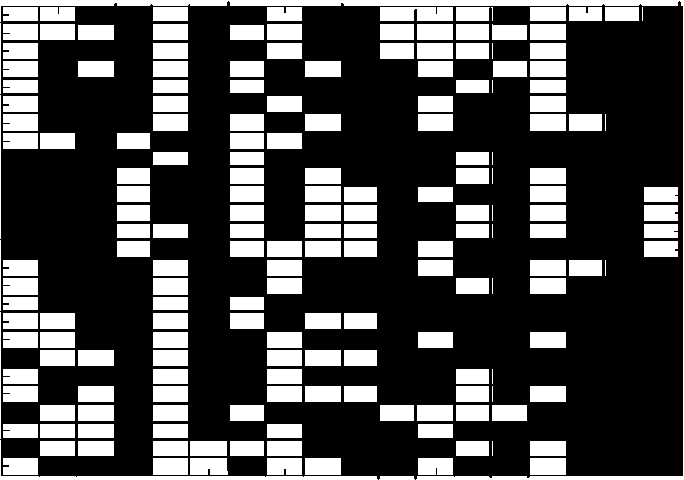several domestic related functional buildings, or just places for the religion-related architectural
artifacts. An example of highly used front yard can be seen in Balinese buildings/palaces.
6. How is the general influence of other non-archipelagic cultures?
- Islam? Chinese? Hindu?
Most Indonesian cultures are geographically placed in coastal areas with high intensity of anchoring
ships of merchants from all over the world. While the influence of Hindu is strong in most Indonesian
ethnic customs, the colors of Chinese and Islamic influences are also recognized in the architecture
of the traditional buildings.
If we denote each memeplex of artifact k is in binary, mki ∈ {0.1} , then the memetic representation
of artifact k can be written,
∪N
i mi (6)
where N is the total number of the elements of the memeplex. Figure 2 shows the memetic
representation of the architectural designs in our case of study. As it has been discussed in
Khanafiah & Situngkir (2006).
PAPUA
ntt
NTB
MALUKU
SULUT
SULTRA
SULUT
SULSEL
KALTIM
KAITFNG
KALSEL
KALBAR
BALI
JATIM
JATENG
YOGYA
JABAR
JAKARTA
LAMPUNG
JAMBI
SUMSEL
Bengkulu
sumbar
RlAU
SUMUT
ACEH

2 4 6 8 10 12 14 16 18
memeple×es
Figure 2
The Structure of Memeplex of Traditional Buildings in Nusantara
In our case, we use the Pearson's Product Moment Correlation between the elements of the
memeplexes to measure how related an architectural designs of all traditional ethnic buildings as
presented in the Taman Mini Indonesia Indah (TMII). Thus, the six classifiers we described above
yield 19 binary memeplexes that we are going to use to visualize similarities and the “family tree” of
the traditional buildings in Nusantara as shown in figure 2. It is apparent that there are strong
correlations among the memeplexes as we would like to visualize in the phylomemetic diagram.
More intriguing information
1. The Impact of Optimal Tariffs and Taxes on Agglomeration2. Spatial agglomeration and business groups: new evidence from Italian industrial districts
3. The name is absent
4. Multimedia as a Cognitive Tool
5. The name is absent
6. A Study of Prospective Ophthalmology Residents’ Career Perceptions
7. The name is absent
8. The resources and strategies that 10-11 year old boys use to construct masculinities in the school setting
9. Measuring Semantic Similarity by Latent Relational Analysis
10. The name is absent